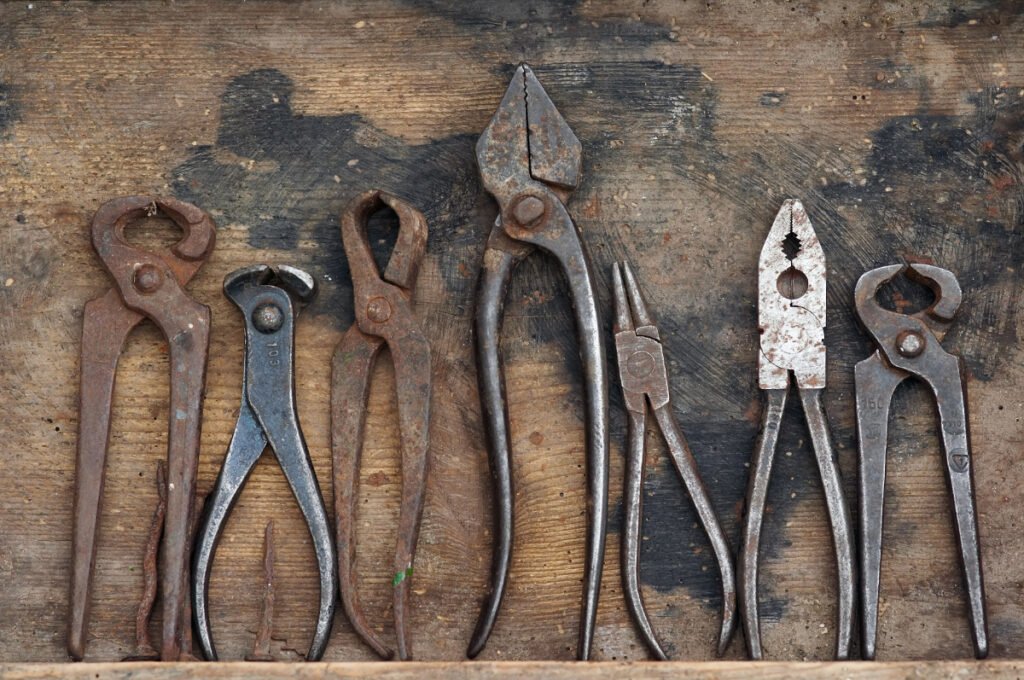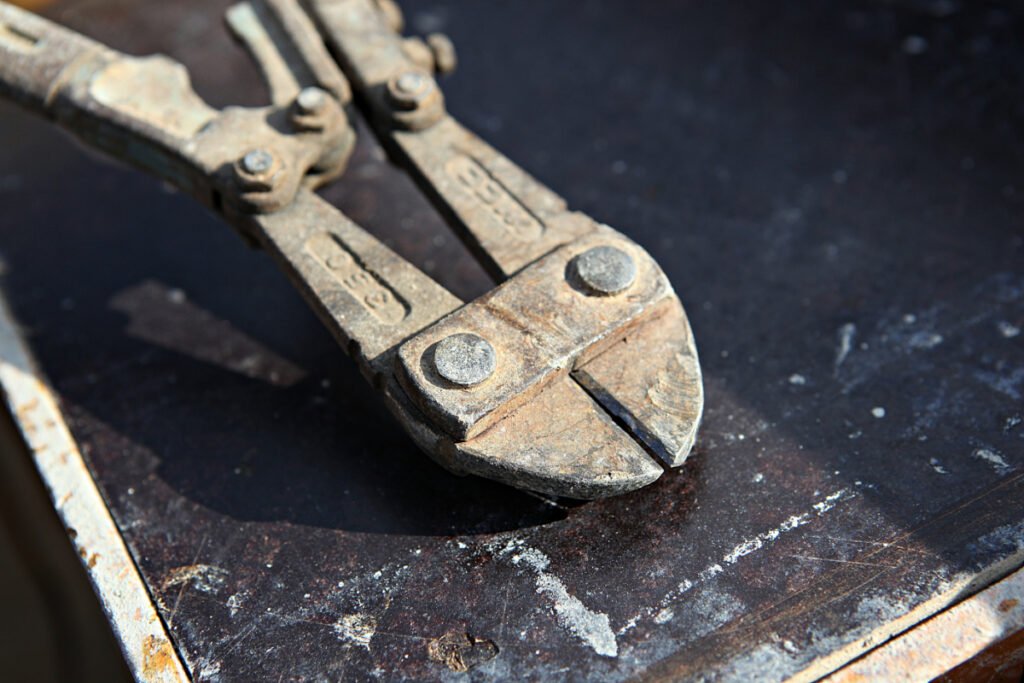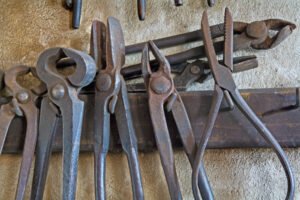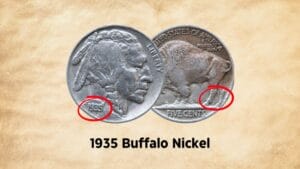Most of us have regular pliers at home for minor repairs. But have you ever wondered about your plier’s age? Probably not! But I’m sure you’re going to do it when I tell you that you can earn hundreds of dollars with your plier if it’s over 70 years old!
Interested? That’s the thing about antiques! But wait, how do you know if your plier’s really an antique? What if it’s just rusty? Well, today, I’m going to tell you about many such features to spot and value your old pliers rightly!
Key Takeaways
- Sharp, needle-like, and specific use – jewelry or grass pliers are the most expensive. And you can also check their patent numbers to age them.
- Look for forged iron, wood, steel, or bronze pliers for an old make.
- Machine-made pliers cost more only if they are branded or slip-joint type! So, better check its logos and condition before purchase.
- Check if your old plier has groovers, rivets, and clamps. If not, it might be new and forged!
How Do You Check If Your Pliers Are Old & Antique?

Get a magnifying glass and observe the plier. Does it have some handmade features like irregular shapes and hammer marks? Or is it a bit yellowish with a powdered patina on the surface? If yes, your pliers might be old, up to $200. If not, they might be new and cheaper!
Now, let’s check some more visual features for clarity:
- 7 – 8” body with exposed jaws, rivets, and clamps
- 0.075 – 0.3 inch wide tapering jaws and first-class levers
- Forged iron, wood, or metal tongs with satin, twisted, or hammered texture
- Metal pliers handle with etched patterns, grooves, or rubber strips for grip
- Fixed pivot with small, cast-iron screws and lacquer
How Did Antique Pliers Evolve?
Stone-age-era tools always have stone, bone, and wood bodies, right? And antique pliers are no different. In fact, you’ll find that the oldest pliers look like tongs! After all, people used them to lift stone and earth utensils. So, they were obviously large and heavy, about 1-2 lbs!
It was in the 1600s – 1700s that the makers came up with a solution! Like, they started using thin, bronze, and iron alloys! So now, the pliers had thin, pointed jaws. And makers also added inbuilt wood grips and snap rings for a better grip! So, these cost about $200 – 900.
Clink! Boom! Entered the machines in the 1800s! Now, it was all easy! Makers just had to pour steel into the molds, and the plier was ready! So, they had more variations like adjustable jaws, teeth, and rings. It’s just that they are common and cheaper!
5 Types of Antique Pliers & Their Estimated Values
Take some time to scroll through the pliers from online auctions or markets. You’ll notice different jaws, handles, and values with each. So, what are these types exactly? Let’s see!
1. Antique Blacksmith’s Tongs (1000 BCE – 1800s)

Just as the name says, makers used blacksmith’s tongs to hold hot, fired metals. So, you’ll see that these have long, squarish jaws and extra bars. Also, check their size! If they are 20 – 28” wide, they cost $15 – 30. But if they are 10 – 12”, they are valued at $100!
2. Old Chain Mail Pliers (1100s – 1600)
Chainmail pliers are like twisting pliers to shape typical armors and chainlinks. In fact, some are so small and round that people use them for chains and jewelry! But they don’t have any grips, bars, or levers. So, they are a bit cheaper, at $10 – 50.
3. Vintage Farriers Pliers (1400s – 1800s)

Old Farriers Pliers are all about horses! So, you’ll find some curved iron or steel heads that twist and turn along the horse’s hoof. You’ll also see toothed cutting edges and nail pullers with these. So, they are more functional and can cost $10 – 25 for an 8-inch solid body!
4. Clockmakers Pliers (1600s – 1800s)
Ask your dealer if he has a short, stapler-like plier with iron bodies. Also, see if it has thin, tapered jaws to pull out the screws and rivets. And if it’s working, you can charge $10 – 25 for it. Otherwise, it loses its value by 3 – 4%.
5. Old Slip Joint Pliers (1900s)

You must have seen the typical kitchen pliers we use at home. Well, old slip joint pliers look the same but have flexible pivots for better grip. So, they can easily move from 45 – 60° angles and notches. Plus, most have extra pipes, nuts, and bolts that cost about $8 – 60.
6 Quick Factors to Identify & Value Antique Pliers
Now that you know your plier type, let’s move to the details! Here, we’ll study the age, materials, and many more factors that affect an old plier’s worth.
1. Antique Pliers Date & Age
Now, we all know that old stone pliers are rare and precious! But sadly, you’ll get them only in museums! So, you can try the 1600s pliers for your collection. And, if you want light, pointed ones, the 1800s pliers are best. Plus, most will be branded! So, they sell well!
But how do you know the date of your old pliers? Well, just open the plier and check the year on it! But if it doesn’t have any dates, here are some clues to check:
How Does a 1700s Old Plier Look?
Most of the 1700s pliers were handmade! So, you’ll see irregular metal surfaces, hand finishes, and large jaws. Next, get a magnifier and check for any patina or chipped paint on the surface. If yes, you can charge about $200 – 900.
How Do You Pick an 1800s Plier?
Look for solid iron, bronze, or steel bodies to spot these! Most will be bare metal, but the branded ones might have wood or leather cases. Also, these have composite bodies. So, you’ll find screws, rivets, and needle jaws with these. Overall, they cost $40 – 200.
How Do You Check a 1900s Antique Plier?
Check if your antique plier has machine-made steel bodies and wire-cutting jaws. Also, open it and see if they have grooved grips and rivets. If yes, it might be a vintage, 1900s plier. Here, the unbranded ones cost $10 – 40. But the branded ones might cost up to $60.
If you’re tired of checking features, here’s a shortcut! Just open the plier and check its patent numbers! Then, match it from our table to know its age and average price.
| Year | Age | Patent Number | Average Valuation |
| 1932 | 91 years | US1931576A (De Neul Brand) | $19 – 25 |
| 1914 | 109 years | D45,919 (H.D. Smith Brand) | $20 – 45 |
| 1950s | 73 years | US3070136A (Wiring Pliers) | $30 – 100 |
Pick antique pliers with wide, cutter, tweezer, or squarish jaws for an old make.
2. Antique Plier Materials

If you want old, handmade pliers, pick the stone, iron, or wood ones. You might even see new steel or vanadium pliers at the auction. But those will be new and cheaper! Similarly, even new rubber or plastic pliers are a big no for good returns!
But did you know that makers used different quality materials for branded and unbranded pliers? So, the value obviously changes with that. Let’s see how:
| Old Plier Body Materials | Average Value for Branded Pliers | Average Value for Unbranded Pliers |
| Seasoned or Lacquered Wood Pliers | $75 – 395 (As per age) | $13 – 60 |
| Bronze or Copper | N.A | $10 – 120 (for 25mm size) |
| Cast Iron or Wrought Iron | $25 – 60 | $5 – 30 |
| Alloy or Carbide Steel | $20 – 60, as per jaw size | $10 – 20 |
| Stainless or Chrome-plated Steel | $9 – 15 | $2 – 4 |
| Rubber or Plastic | $15 – 20 | $7 – 10 |
Multifunctional pliers with attached knives and root-cutting tools might cost $150.
Get old pliers with a hand-beaten hammered, satin, or brushed finish for an old make.
3. Vintage Plier Use

Now, you might have seen the common, u-shaped pliers at your antique shop! But ask your dealer if he has some rare nippers or tweezers as well. Why? Because these are custom-made and have specific parts that you won’t get elsewhere!
Like, the small nippers might have end cutters or pullers to unscrew nails. On the other hand, pincers have long jaws for leather work. Tweezers have thin, needle-like jaws, while cutters are thick. So each obviously has a different value!
And here’s a list to help you with that:
| Antique Plier Use | Estimated Value |
| Nipper Pliers | $20 – 90 (Might cost up to $150 if they are Scottish-styled) |
| Pincer Pliers | $13 – 30 |
| Cutter Pliers | $8 – 60 (Might go up to $120 if it has wire-cut jaws) |
| Tweezer Pliers | $15 – 140 |
You can hike your plier’s value by 10 – 12% if it still has its original box and metric weights.
4. Antique Plier Brands
If you don’t have any idea about your plier’s date and use, try this! Rotate your plier and see if it has any logos, signs, or maker marks on its handle. If yes, it’s a branded one! And you can simply check the brand’s catalog for the price!
And here are some popular plier brands and their marks for help!
| Old Plier Brands | Maker Marks to Look for | Average Value Guide |
| Klein | Etched model or Patent numbers | $15 – 180 (might go up to $750 if they have an old, iron body) |
| Channellock | Signed name & Trademark | $12 – 25 |
| Bernard | Logo with a dog’s head in a circle | $11 – 25 |
| Boker | Logo with a tree inside an oval | $12 – 65 |
| Keen Kutter | Etched diamond-shaped logo | $15 – 35 |
Sometimes, the maker’s marks might be hidden under rust. So, rinse the surface with vinegar and dab it lightly to remove the rust.
5. Old Plier Condition

Antique lovers always look for good, sharp-jawed cutters for good value. So, any rusty, broken, or chipped plier will obviously be cheaper. Like, if the pliers have broken jaws, they may lose 5 – 6% of their value. And if they need to be aligned, they cost only up to $15.
6. Vintage Plier Finishes
You’ll get antique pliers in three finishes – nickel, black oxide, and chrome. Of these, the black oxide ones are old and don’t last much. So they cost 5 – 6% more than the rest! The nickel and chrome ones, on the other hand, are new, machine-made, and cheaper.
How Do I Identify the Finish of My Old Plier?
Simply scratch the surface and check the texture! If it looks crude and powdery, you might have an oxidized plier. But, if the plier feels soft and shiny, it might be new and chrome-finished.
How Do You Clean Antique Pliers?
Prepare a diluted solution of soap and warm water, and soak your pliers for 15 – 20 mins. Next, rub it with a scouring brush and apply polish or wax to save it from rust.
Are Old Pliers Worth Anything?
Yes, old pliers cost $100 – 200, depending on their age, materials, and finishes. Branded or handmade ones go even up to $300 – 400. But the misaligned or broken ones don’t cost as much.
Now that you know all about antique pliers, let’s value your piece! As discussed, simply check your plier’s features and see the values next to it. And if you are not sure about the age and brands, you can always reach out to us for help!
Likewise, if you want to know the value of more antique tools like plows, wrenches, handsaws, and broad axes, join us now!
Note: This article is intended for informational, educational, and entertainment purposes only. Some images are illustrative and may not represent actual brands, products, or related entities. All trademarks, product names, brand logos, packaging, and other intellectual property referenced remain the exclusive property of their respective owners. Any brand mentions or references are provided solely for descriptive and educational context and do not imply any formal or commercial association.










